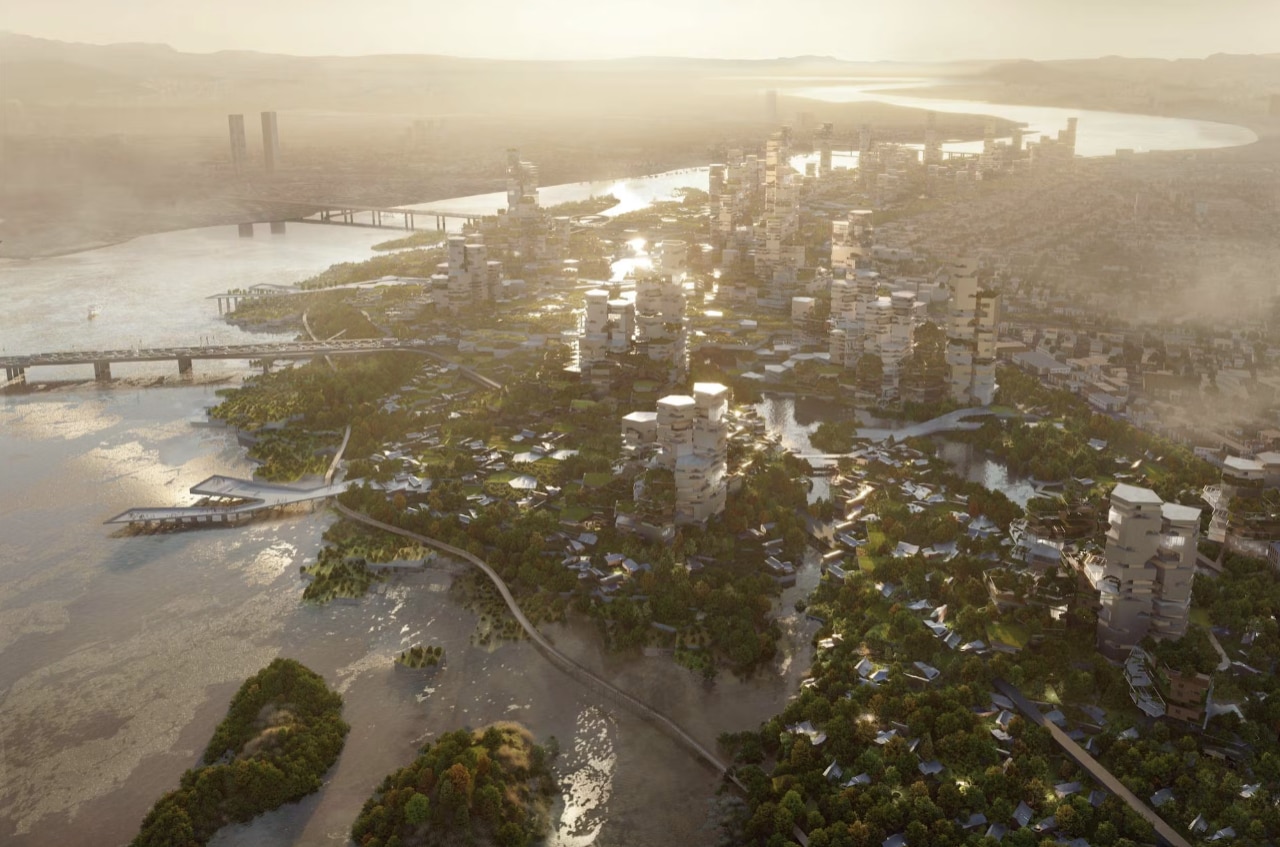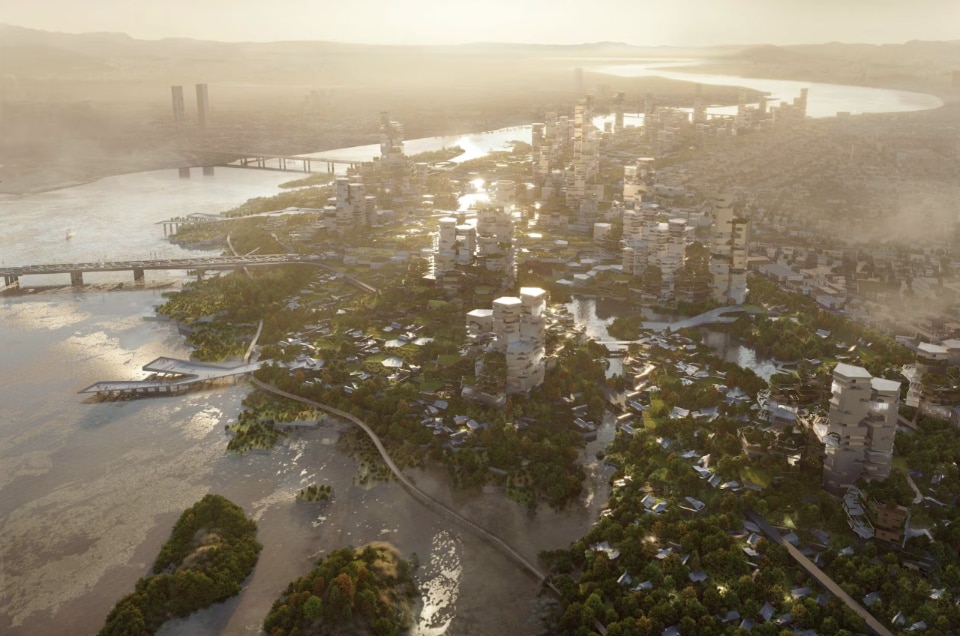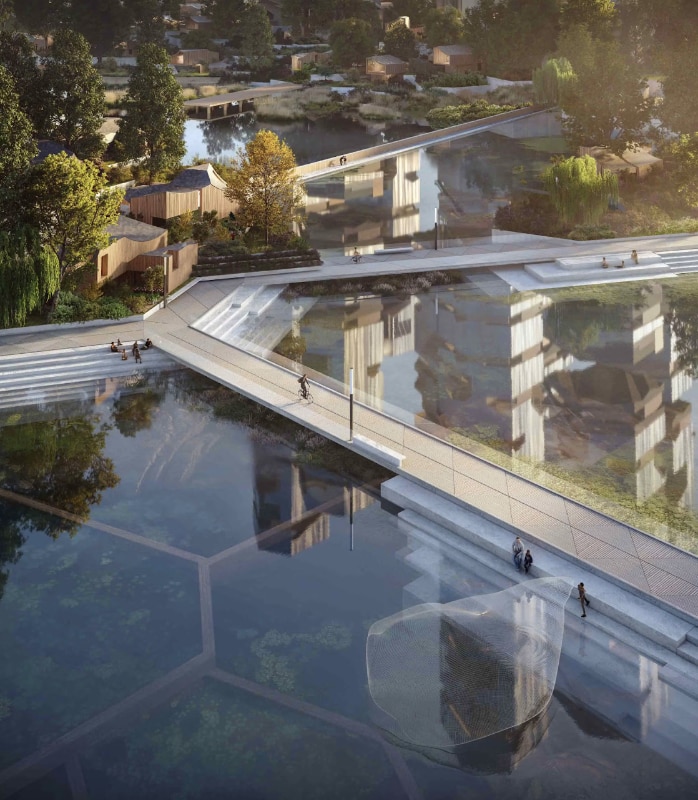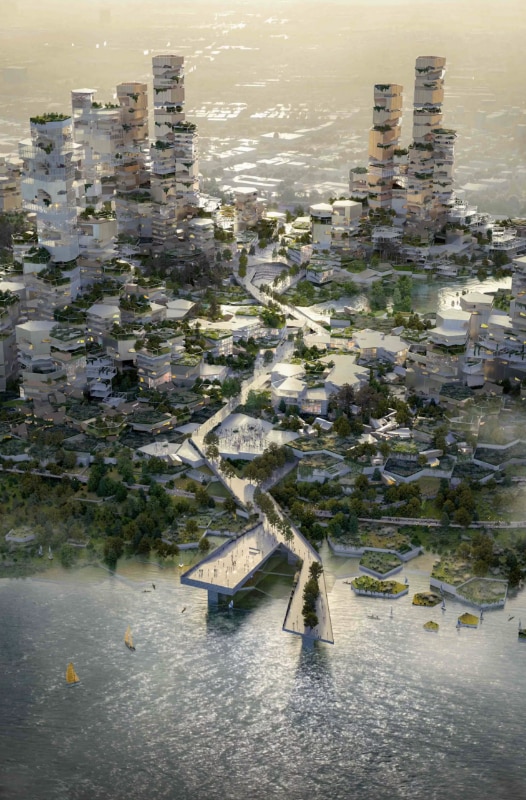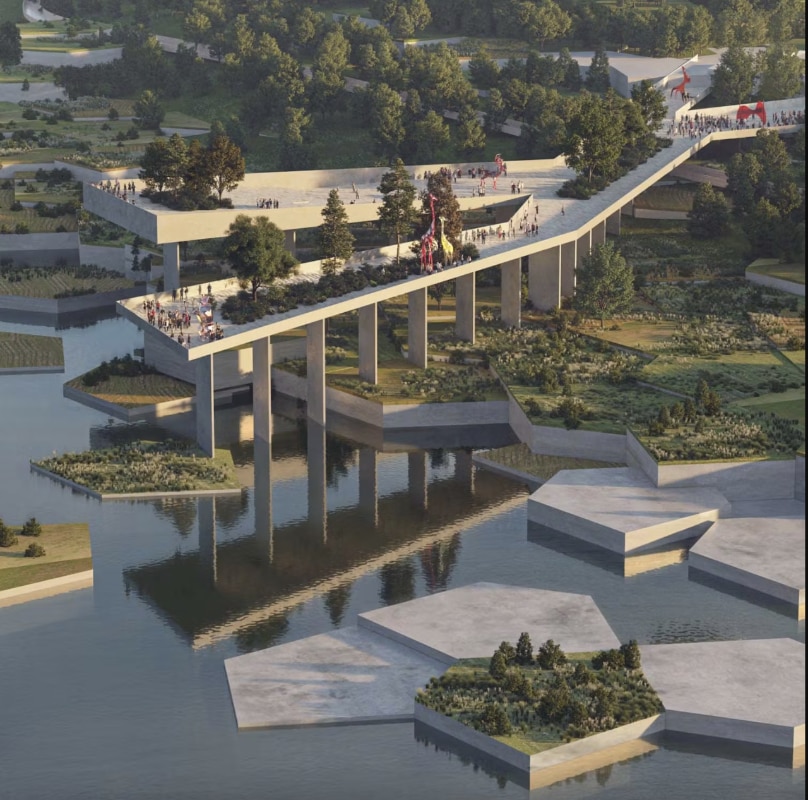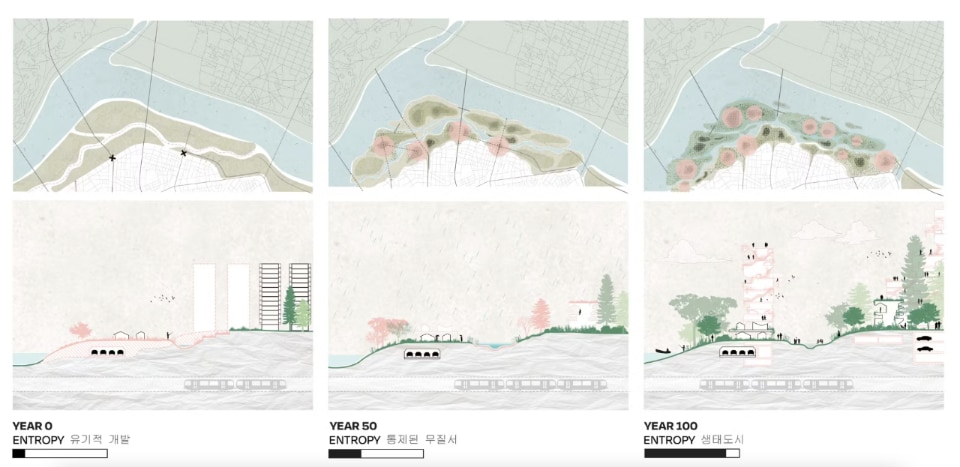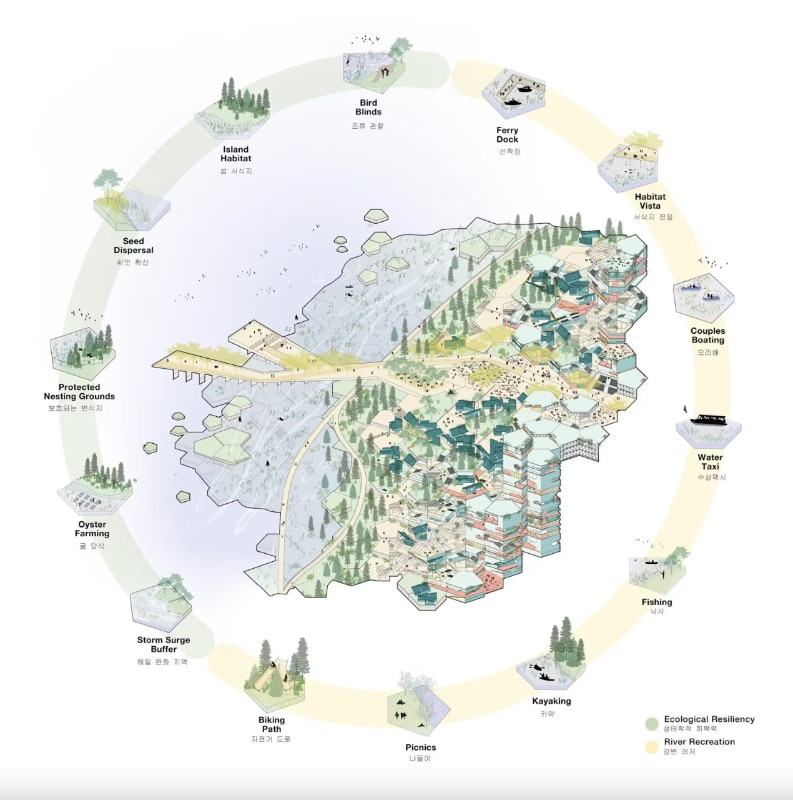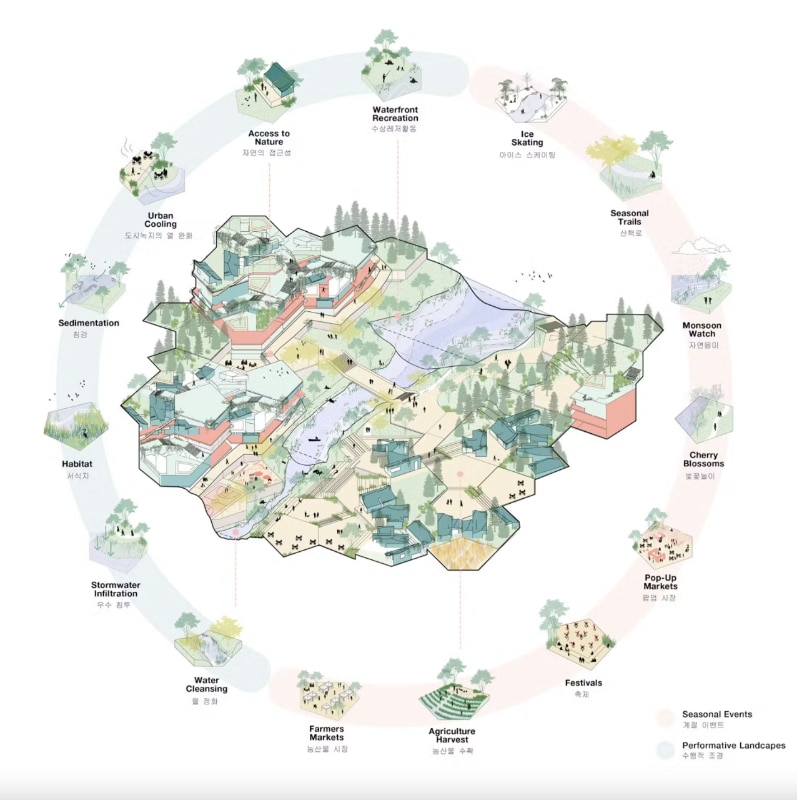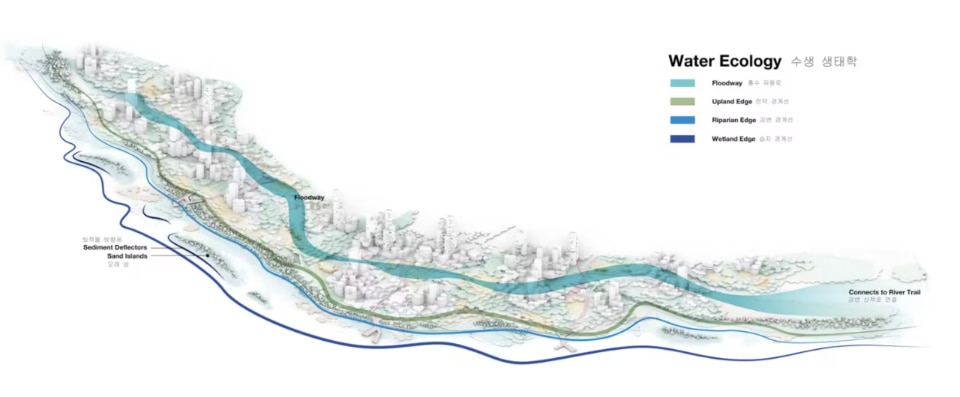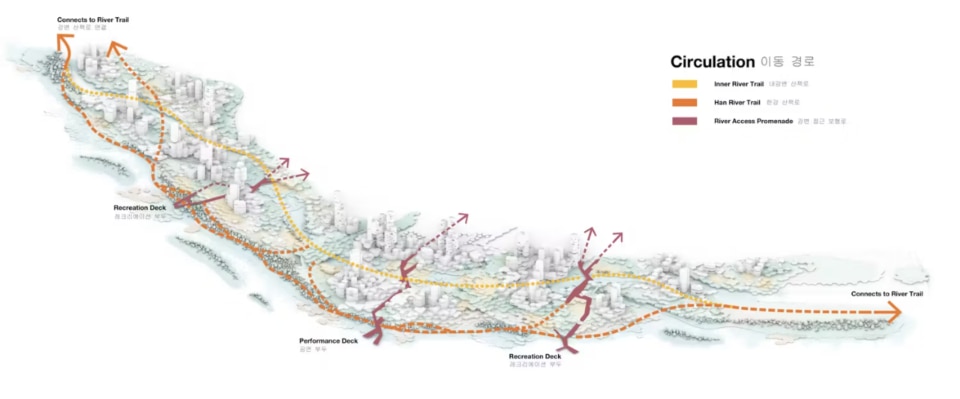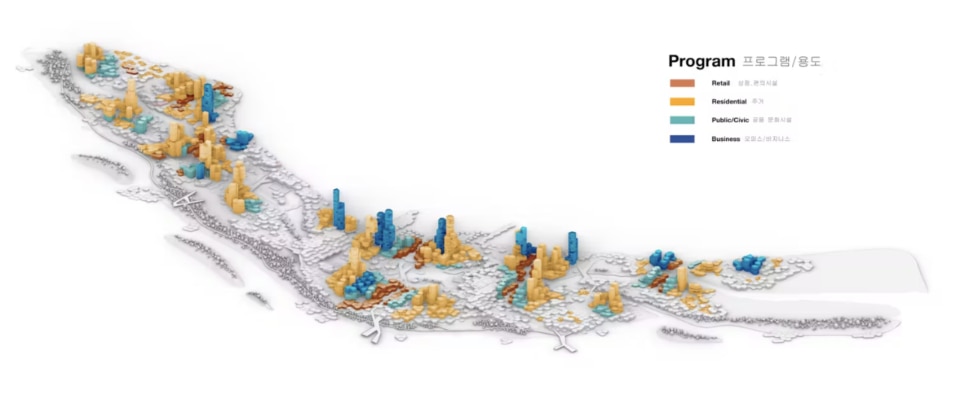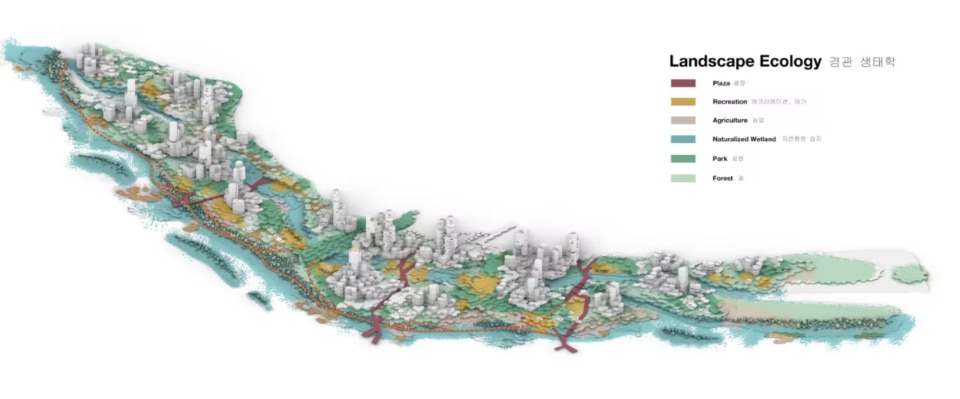At the fourth Seoul Architecture and Urban Planning Biennial, the Californian firm RIOS presented a masterplan hypothesis for a “Hyper-Abundant” city, centred on the growth of the Apgujeong district of the Korean capital, which borders the Han River.
By envisioning what the city might look like 100 years from now, the theme of this Biennale, the Hyper-Abundant City plan reinterprets the future of the area with a focus on the risk of flooding that punctually affects the Han riverbank.
The project is based on a modular grid, already existing in the neighbouring Gangnam district, which helps to distribute different building types throughout the district, alternating them with green spaces. In this way, traditional village layouts centred on agriculture - which have remained intact in the famous Gangnam - serve as a blueprint for efficient new urban development, without limiting its possibilities.
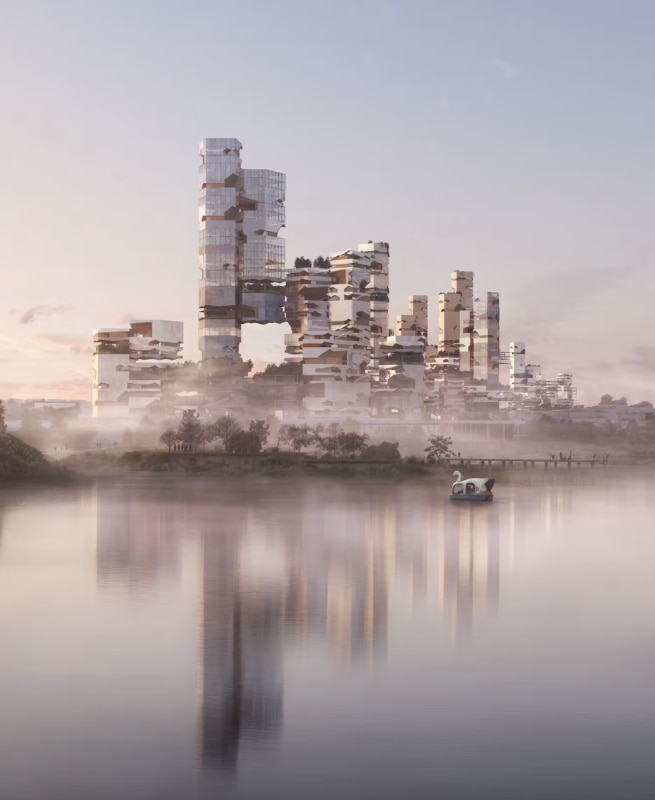
“We recognize the value in blurring the boundaries between land and water, landscape and architecture, city and building to introduce an abundance that does not exist when each element is restricted” says Katherine Harvey, the project’s creative director. The project aims to introduce biodiversity into the area, extending it to every slope, terrace and façade. The designers propose sustainable cultivation for the future inhabitants, allowing for gradual evolution over time.
The Hyper-Abundant City would introduce a series of artificial coastal islands in response to the risk of urban flooding. They would retain specific amounts of water during storm events, gradually releasing it once the wave of bad weather has passed. This filtration, absorption and dissipation system integrates with public spaces and “allows for the intermingling of landscape and cultural systems to bring inhabitants and visitors a greater connection to the water’s edge”.
RIOS Studio’s proposal combines the will to make Seoul ready for extreme weather events while integrating new living systems and social practices. “The city of hyper-abundance redefines the human-nature boundaries, instilling a sense of awe and reverence for the world around us.”


